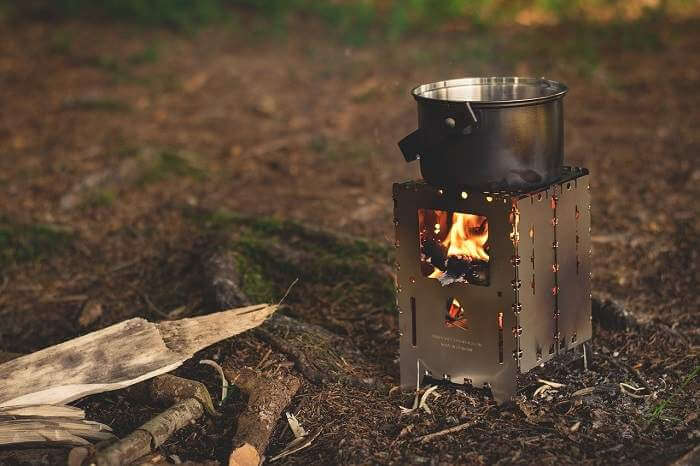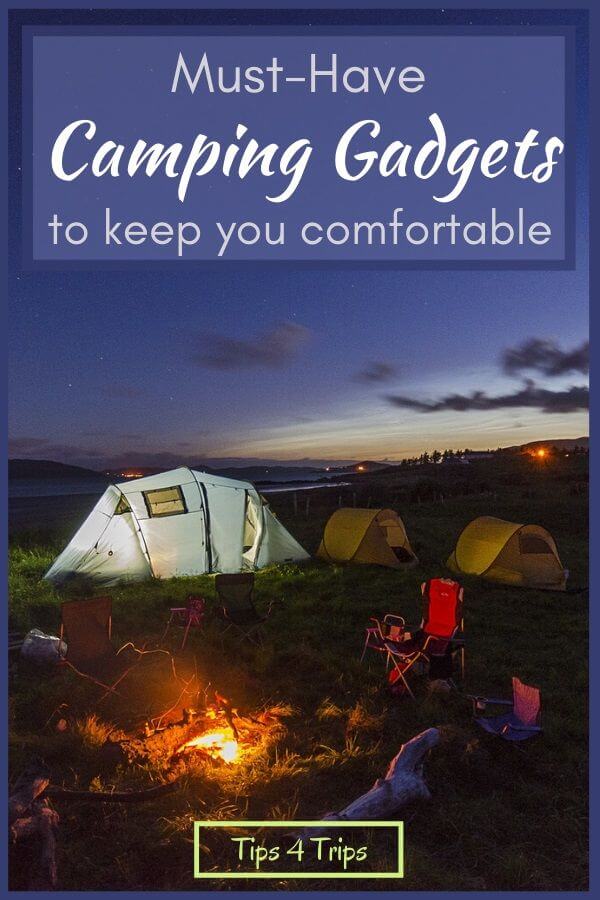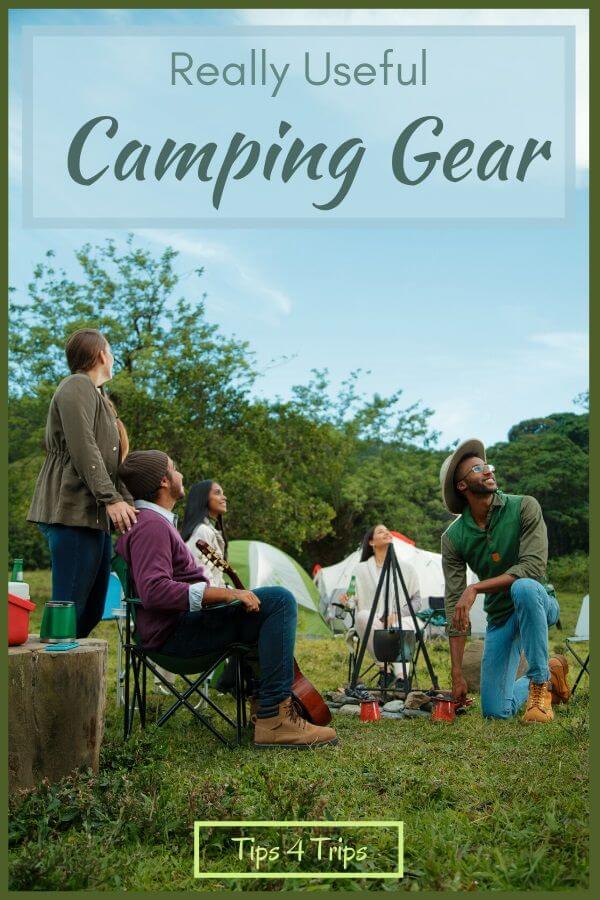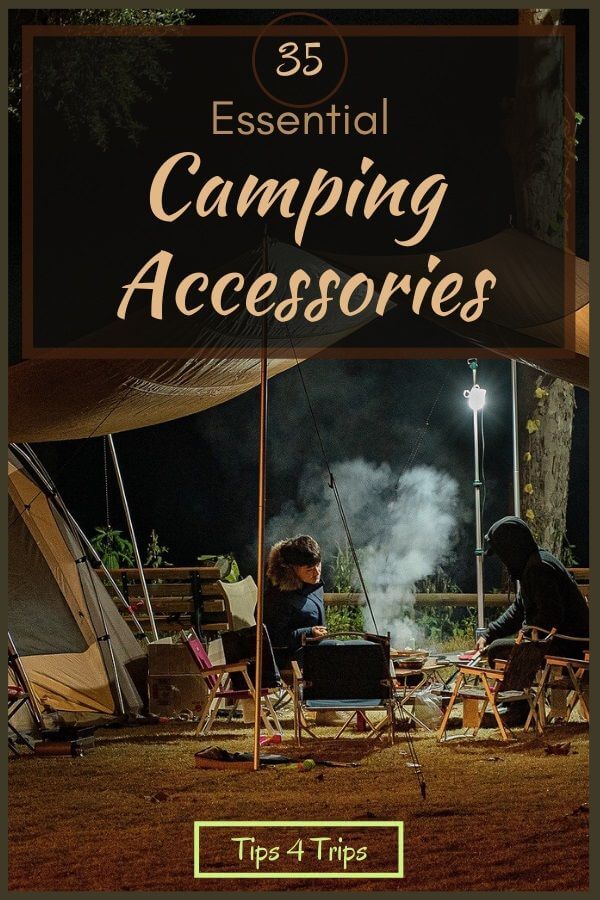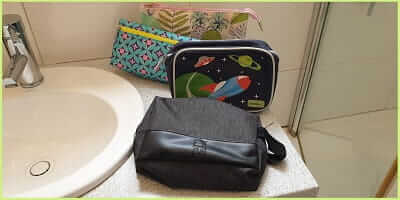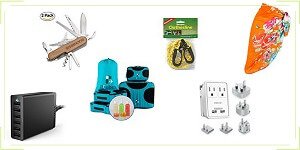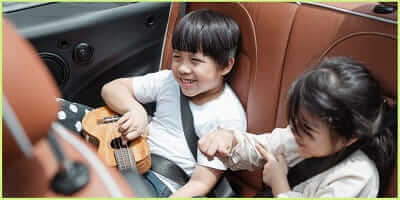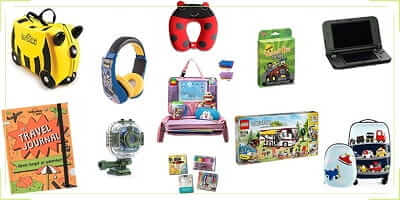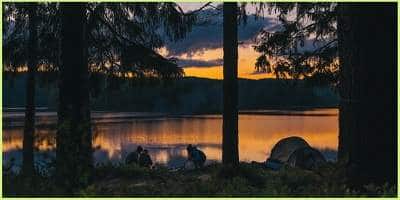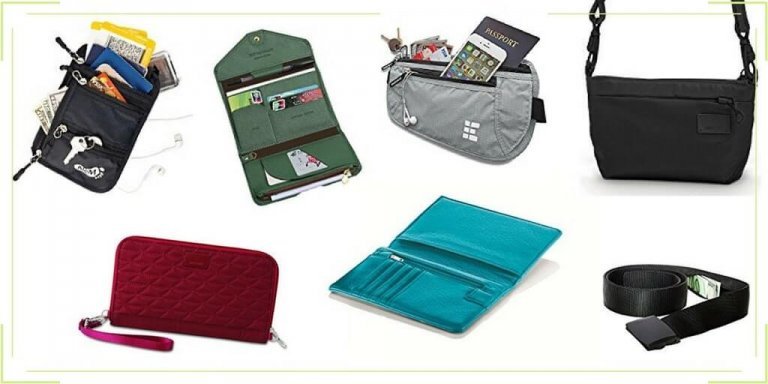35 Really Useful Camping Gear to Enjoy the Outdoors
Can you picture yourself camping in the outdoors? Whether that be in the wilderness, by the lake, near the beach or even in a campground. Do you see the tent? Do you see yourself relaxing by the fire possibly cooking a meal? Ahh, the thought of it, you’re ready to dash off now!
But wait, what is the best camping gear to take with you to achieve this goal? With so many unique camping accessories on offer, how do you know which ones are the best to make your camping dream a reality?
To help you find the answer I’ve asked 35 travel bloggers (who camp) to share their favourite equipment that is at the top of their most useful camping gear list.
In this Article Learn About these Clever Camping Gadgets
Click to Jump to Your Interest
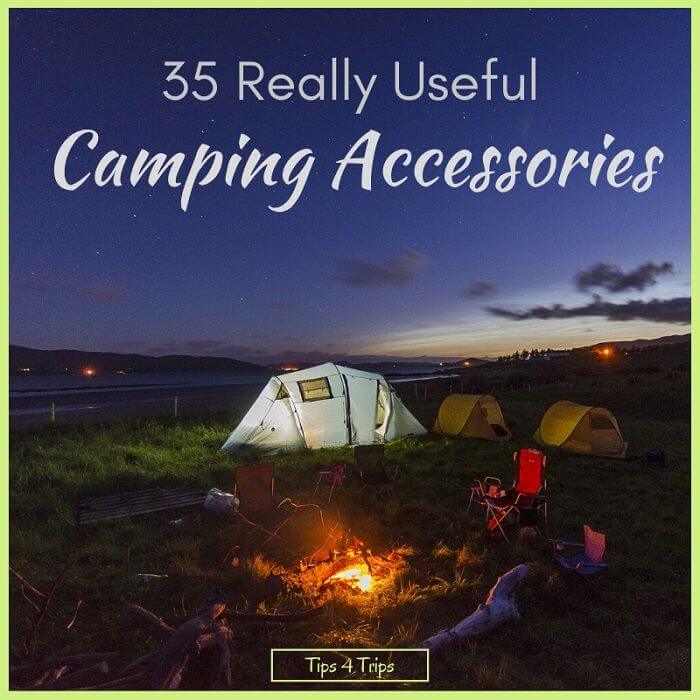
Please share this with them
Image by David Porter from Pixabay
This post by Tips 4 Trips contains affiliate links*. This means I may receive a small commission if you click on these links. Learn more at the bottom of this post.
The Tent
1. The Lightweight Tent
Suggested by Alissa Aubertin from Mount Adventure Club
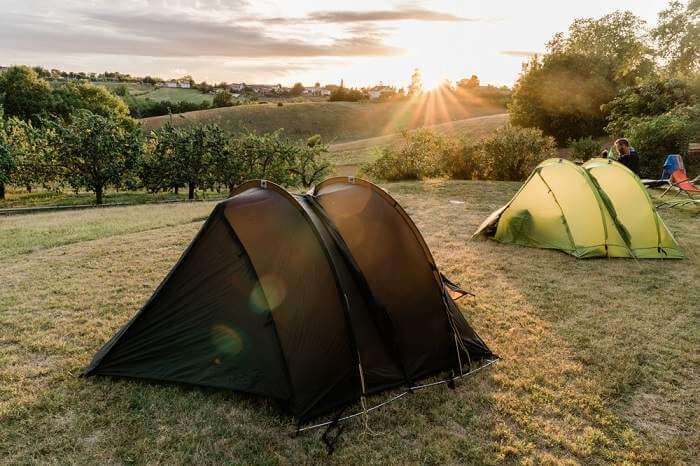
Six weeks hiking the Via Podiensis (Le Puy Camino) through southern France in late 2019 with three kids and a plan to carry all our own gear and camp on the way, we needed to keep things light!
After what felt like years of searching online rabbit holes we ended up stumbling upon Rhinowolf. A clever, lightweight hiking tent designed to work in tandem with an extremely efficient air mattress and proprietary sleeping bag/blanket. Total weight? 2.5kg. Rolls up in one piece with a sleeping bag and mattress inside for a tight, easily stowed package. Total cost for all 3 items is less than what most tents cost on their own. It’s a win, win, win.
On top of that, it’s a super clever design. Being a single-man tent is great but if you have fellow Rhinowolfers with you, they are designed to zip together endlessly creating two or more man tents instantly. Functional! Plus it was so simple to put up and down, our 11 and 15-year-olds took care of their own. Super suitable for hiking, backpacking, lightweight or low-impact travel of any kind. Six weeks of camping in our gaggle of Rhinowolfs and they didn’t miss a beat. With the heavier sleeping bag option, the cold of autumn was kept at bay. We loved them.
2. Pop Up Tent
Suggested by Melissa Delaware from Queensland Camping
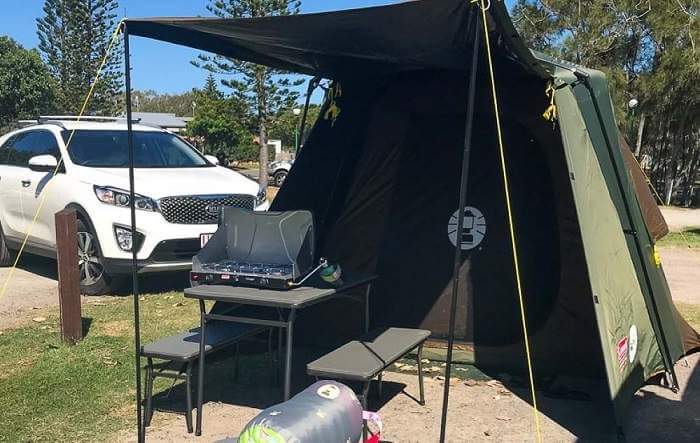
After 15 years of camping – my very favourite piece of camping equipment is without a doubt my Coleman pop-up tent! Seriously I think this guy has saved my relationship!!!!
For years and years, we had been taking hours and hours to erect the Taj Mahal of tents. My partner and I used to bicker while doing so. Then we decided to downsize our tent and went for a Coleman Pop Up Tent and we are never ever going back!
Our pop-up tent literally goes up in seconds. Like not even exaggerating! The longest part would be hammering down the pegs. It’s the same for packing it away too, it’s down in seconds. Probably the hardest then in squeezing it all back in the bag.
We’ve had our pop up tent for a few years now and use it on every camping trip. We’ve been over to Stradbroke Island, Cotton Tree and plenty of other campsites around Brisbane. I would absolutely recommend it to everyone. Why take hours to set up your tent when you get one that takes seconds?
3. Mosquito Tent
Suggested by Leyla Alyanak from Off Beat France
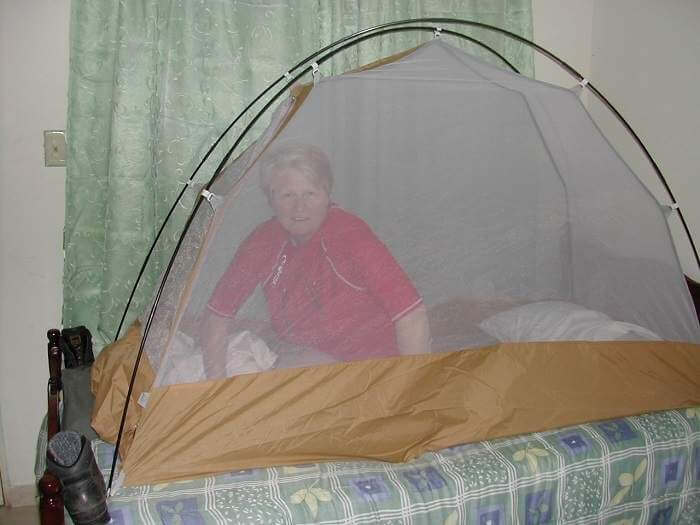
A mosquito tent (also called a mosquito net tent) is the kind of gear you’ll want if you’re going into the wilderness or if you may face a risk of being bitten by flying insects.
This is a light piece of equipment to take with you and fits easily into a suitcase or backpack. It comes in a range of models but on average, it weighs about 4lb/1.8kg, with a mesh upper and polyester base.
What I love about this is that it frees me both indoors and out when I travel to mosquito-laden destinations. Inside, I can plop it on the bed if the room has too many insects. I move the bedding into the tent and then place it on any bed, even the smallest.
Outdoors, if there isn’t a proper shelter, the mosquito tent* can be positioned under a lean-to or in a clearing.
While I’ve only used it in tropical settings – in several African countries, in Panama and in Southeast Asia – you should be able to use it in more temperate climates that also suffer from an excess of mosquitoes, blackflies and other stinging insects.
4. Privacy Tent for the Toilet
Suggested by Keri Hedrick from Family Travel in the Middle East
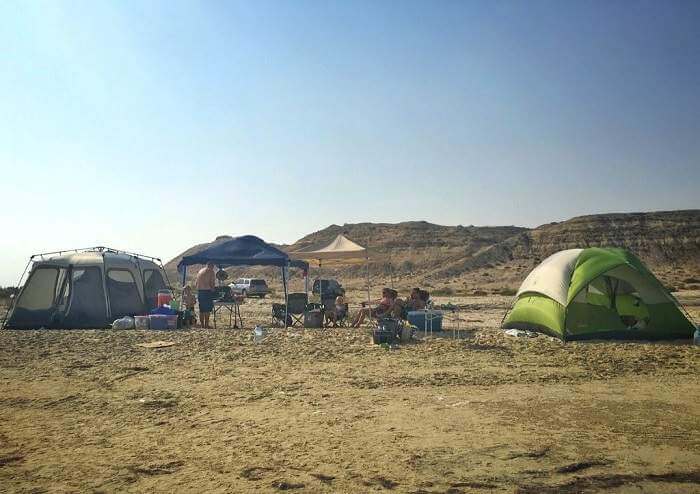
One thing we quickly learnt when adapting to desert & beach camping in the UAE, there is really nowhere to hide! Whilst sand camping itself throws up plenty of additional challenges for managing your camp set-up, the biggest issue we found was privacy for toilet time. Even if you camp near a protected outcrop or foot of a dune, it can be a considerable hike to find a private corner, and there are simply no trees around to cop a squat.
Cue our investment in a privacy tent*. We set it up with a deep hole a reasonable distance behind our camp then set the tent over the hole, with a shovel and loo roll kept inside. Each person simply fills the hole after themselves, then you move the spot when appropriate. You can also alternatively use them for setting up any sort of outdoor shower or changing tent – though showering during desert camping is pretty futile! Just remember to purchase one that has an open bottom, not an inbuilt floor.
Top Trip Tip: For dessert camping – invest in heavy-duty tent pegs. The ones provided with the tent are unlikely to work in super-soft sand and there is truly nothing more embarrassing than seeing your privacy tent blow away mid-business!
Sleeping
5. Big Agnes Air Chamber Sleeping Pad
Suggested by Wendy Werneth from The Nomadic Vegan
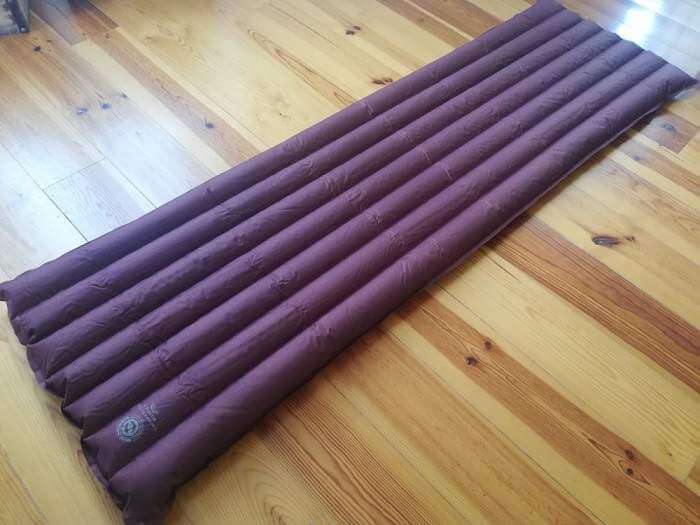
Before my husband and I bought our Big Agnes inflatable sleeping pads*, we used to sleep on thin foam mattresses when camping. This was probably why we didn’t enjoy camping very much, because we never got a good night’s sleep. When Big Agnes came into our lives, everything changed.
Sleeping on a cushion of air really makes a huge difference, and the Big Agnes is designed to be as comfortable as possible while still being lightweight and easy to carry when backpacking. It comes with a stuff sack to minimize the space it takes up in your pack, and there’s also a repair kit included in case you need to fix any leaks.
We’ve used it while travelling in Iceland for three weeks and also on a three-month trip around Africa. I would never want to go camping again without it.
6. Compression Pillow
Suggested by Mikaela Anne from Voyager Tripper
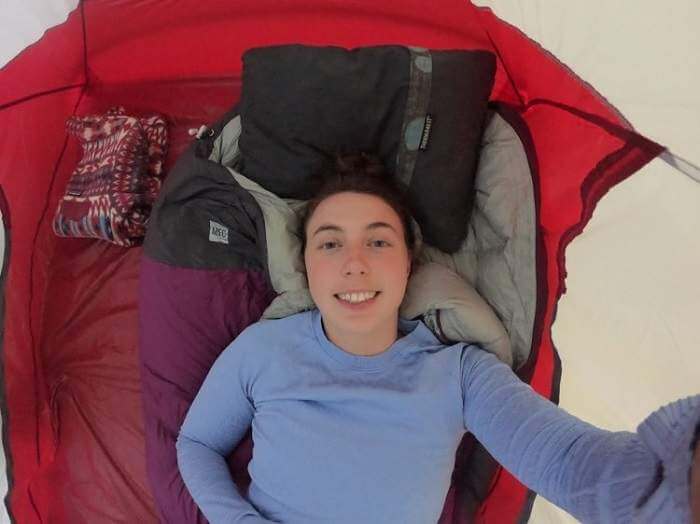
A compressible camping pillow has become a serious staple in my camping gear collection. I have the Therma-Rest Compressible Pillow*, which is filled with an upcycled foam. The outer material is a soft, yet water-resistant, brushed polyester. It’s easy to compress the pillow; roll it lengthwise and stuff it into a sewn-in flap. There is a drawcord to secure and keep the compressed pillow small. There are also options for inflatable or down-filled pillows, though this foam one has always been my favourite.
I started bringing a compressible camping pillow when I first started canoe camping. It made two-week canoe trips incredibly relaxing because I always felt so well-rested the next day. I guess I got spoiled because I now bring it on every trip. My friends tell me it’s unnecessary and it takes up too much space or it makes my bag too heavy. But none of them are complaining when I’m up at the crack of dawn, chipper after a great night’s sleep, the fire already roaring, and a pot of coffee made!
7. Sleeping Bag
Suggested by Ruth Rieckehoff from Tanama Tales
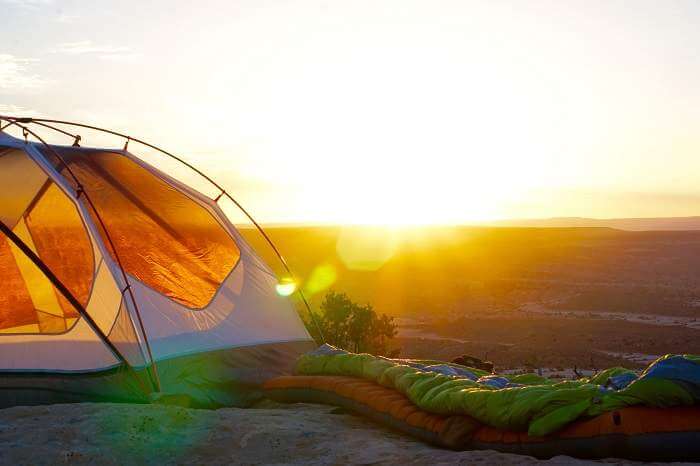
Going on a camping trip to San Diego County is one of our favourite ways to spend the weekend. We get the perfect combination of beach walks, moderate hikes, and city life.
Even though the weather in California is temperate all year long, nights can get cold. If camping on the beach, wind can contribute to the chill factor. We have learned that not all sleeping bags are created equal. Being clueless about this piece of equipment can lead to a night of uncomfortable sleep.
After a few “incidents,” I did some research on the topic and decided to buy a zero degree sleeping bag*. As the name indicates, these bags are designed to make you feel cosy at zero degrees Fahrenheit (-18 Celsius).
This sounds extreme but I wanted a single sleeping bag to use on my beach and mountain trips. If it gets cold, I get inside the bag. On warm days, I use the bag as an extra cushion over the air mattress. Then, I use a think sheet as cover and use the bag on chilly mornings or when the wind is blowing hard.
This bag has worked like a charm and helped me to enjoy camping even more!
8. Sleeping Bag Liner
Suggested by Ellen Miller from Adventures with Nell
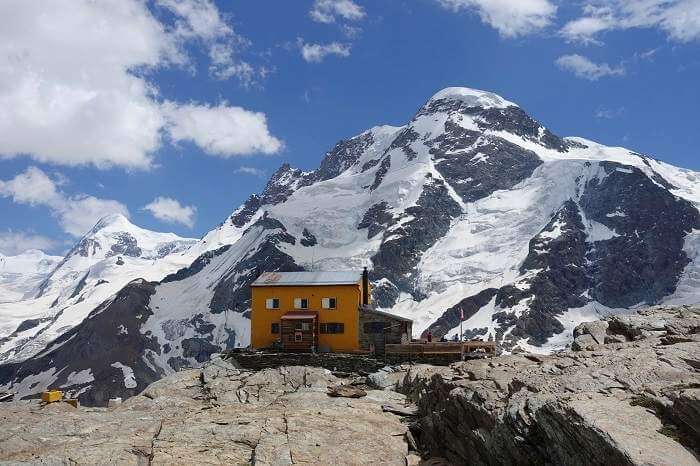
I’m sure a sleeping bag will be on top of your camping packing list, but what about a sleeping bag liner? It’s been a game-changer for me, especially on longer camping trips and in warmer climates.
These lightweight liners are made from cotton or silk and slip inside your sleeping bag. As they are washable and quick-drying, sleeping bag liners can be washed more regularly than a sleeping bag, particularly whilst camping, for more hygienic camping.
Often, I’ll use a sleeping bag liner instead of a sleeping bag. When camping somewhere warm, it might be too hot for a sleeping bag, but I certainly still want to feel the security of sleeping under something!
Sleeping bag liners* are great for travelling even when you’re not in a tent. If you enjoy high-altitude hiking, you might stay in a mountain hut, where sleeping bag liners are compulsory. It’s too hot for a sleeping bag, plus that’s an extra weight to carry. My liner was a lifesaver in surviving the mountain huts when glacier hiking the Spaghetti Trail.
Finally, a sleeping bag liner can double up as a pillow, a towel, a storage bag or anything you want it to be!
9. Travel Tray
Suggested by Cassie Trin from White Sands and Cool Breezes
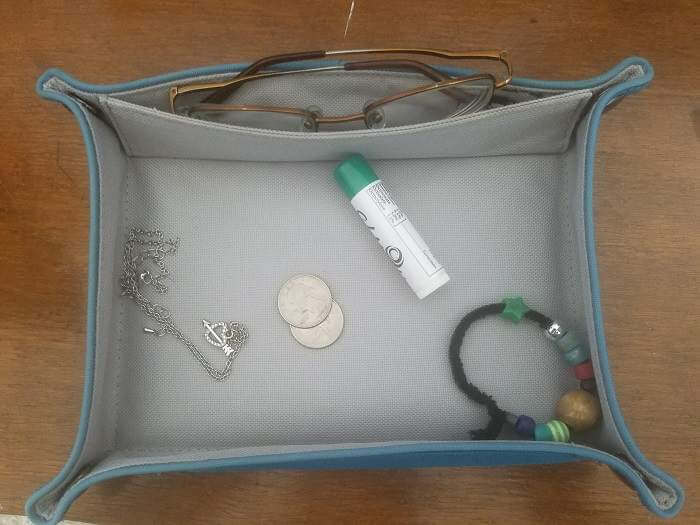
I use my travel tray* every time I travel…o.k., I’ll be honest, I even use it at home sometimes!!
I wear glasses/contacts so having a place to keep them safe overnight is always comforting. And I’m one of those people who likes to always have ChapStick nearby, especially at night because inevitably I’ll want it. It’s a great place to put keys, cough drops, snacks, and jewellery. Really anything little that you’re worried about misplacing while you’re sleeping or even out and about.
Now, besides it being great in terms of holding your personal items so they don’t get lost, it lays flat. When you’re using it, the buttons in the corners can be snapped together so that you can fold up the edges so nothing can roll out of it, and it has an extra pocket on one side to specifically hold your glasses/sunglasses. Otherwise, with everything unbuttoned it lays completely flat so it can easily fit anywhere!
Finalising Your Camp Setup
10. Power Inverter
Suggested by Paula Martinelli from Paula Pins the Planet
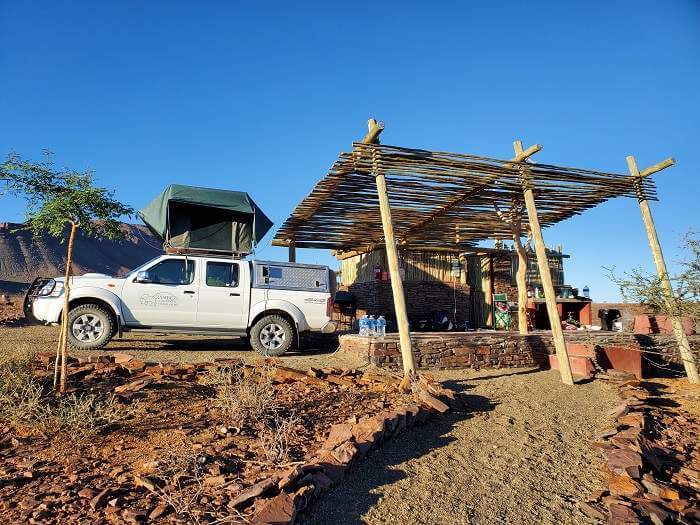
There is life before and after I bought my power inverter for trips around the world, especially when I travel with my husband, and everything you have is multiplied by two: a cellphone, camera, drone, laptop, etc. There is no more taking turns to charge anything, as you can plug in all of your electronics and be free of any risk of running out of battery.
This power inverter, once plugged into the 12v outlet in the vehicle, works flawlessly. The cord is long enough to stash under a seat or in the console if you have space and it is very compact to carry in your carry-on. You can charge four devices at once with a 2 x USB/2 110v outlets, or add a power strip to one of the 110V outlets and expand your charging capacity.
I have been using mine for about four years in several countries and conditions, and I never had any problems or complaints. On my last trip, I drove and camped around Namibia, in very isolated areas, and some of the campsites had no power. Once again, this power inverter was a lifesaver. This is the first item I pack for any trip I go on.
11. Solar Camping Lights
Suggested by Jenny Lynn from Peak District Kids
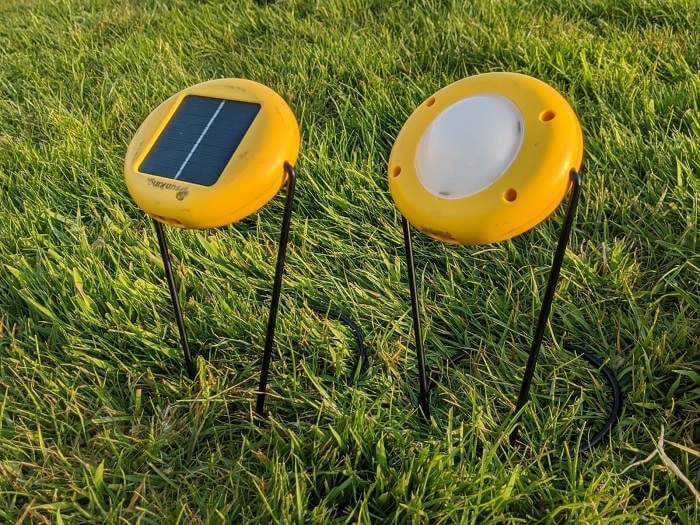
On our 101-day overland adventures through Sub Saharan Africa, we camped in roof tents on our Land Rover Defender almost every night. One thing we could never guarantee at an African campsite was electricity, and our solar camping lights became an absolute essential.
In this region of Africa, it gets dark very quickly, and often as early as 6pm as you get closer to the equator. We had started our trip with the usual battery lights, but these drained very quickly and we actually ended up buying these solar camping lights at a petrol station in Malawi for USD 6 each.
You can leave the lights out in the sunshine (even indoors behind a window) and they will recharge in a matter of hours and last all evening (or all night if you have them on a lower setting).
That trip was two years ago, and not only have our solar lights lasted that trip, but we have taken them camping ever since, including a month-long road trip through France to the Pyrenees last summer, to festivals, and more recently for garden camping.
12. Folding Chairs
Suggested by Deb Pati from The Visa Project
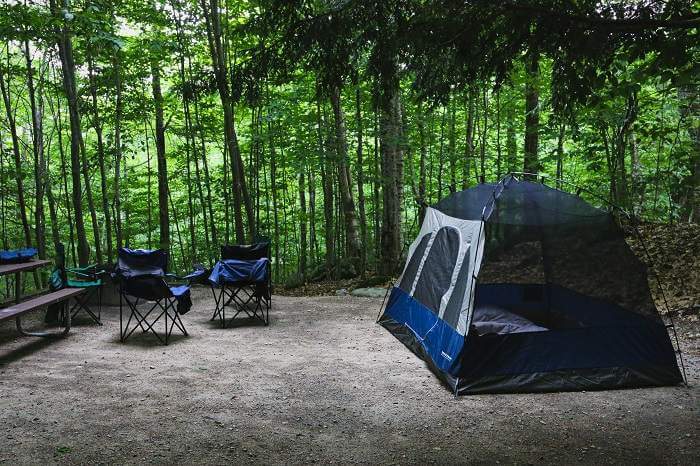
I remember buying a foldable camp chair from REI, right after my first camping trip to Arches national park. I had thought that there was no need to spend on one. However, after hiking the whole day, when I wanted to sit near a bonfire with my hiking group and have some hot chocolate, I found out that I was the only one without a chair. I could either go back to my tent or sit on a rock or be inside my car. None of them was the ideal choice. So on my next trip to Bryce, I got myself a camp chair*.
If you love camping, a folding camp chair is an indispensable item. Be it relaxing after a day’s hike, sitting around a bonfire, or having lunch — it will always come in handy. They come with a side stash pocket to keep magazines, books and maps within reach, and cup holders. Most of the folding camp chairs are small for easy transport and can fit anywhere in your car easily. And assembling it into a comfortable seat takes only a few seconds.
13. Hammock
Suggested by Chris Whittaker from Global Shenanigans
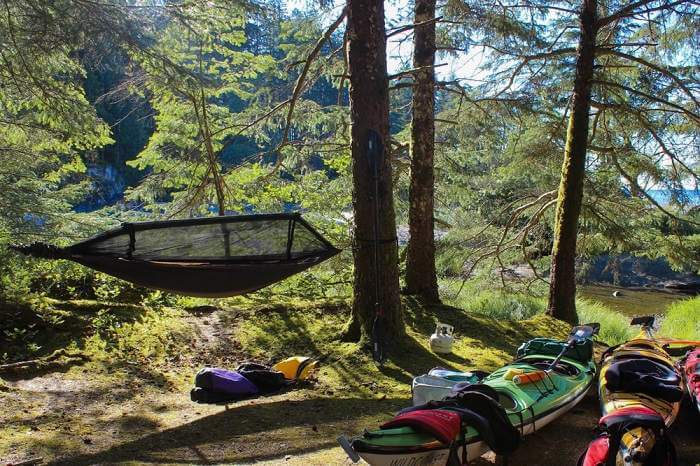
Hammocking is more than just a camping accessory. Hammocking is an art form. It is a way of life that must be practised and crafted over time, always seeking that one perfect hammock spot. My hammock* has been my go-to for multi-day hikes, kayak trips and canoeing in North America as well as France. It goes all over the world with me!
You see, sleeping in a hammock has so much more to it than simply laying out your tent on some flat ground. The beauty comes in the fact that my perfect hammock set-up probably wouldn’t work for you. It depends on your height, weight and your preferred sleeping position. I look for trees that are only an extra foot longer than the hammock on each end. This allows me to pull the hammock so taught that I can sleep on my side without any bend. Other people prefer to take a loose ‘banana’ shape. This is what makes your journey with the hammock so special. It takes time and experience to know what works for you. It is also why many people only try once and never get beyond the ‘testing’ phase.
I urge you to try it, to stick with it and you too may reach hammock-assisted enlightenment as you swing in a cool summer breeze.
14. Portable White Noise Machine
Suggested by Diana Cal from Travels in Poland
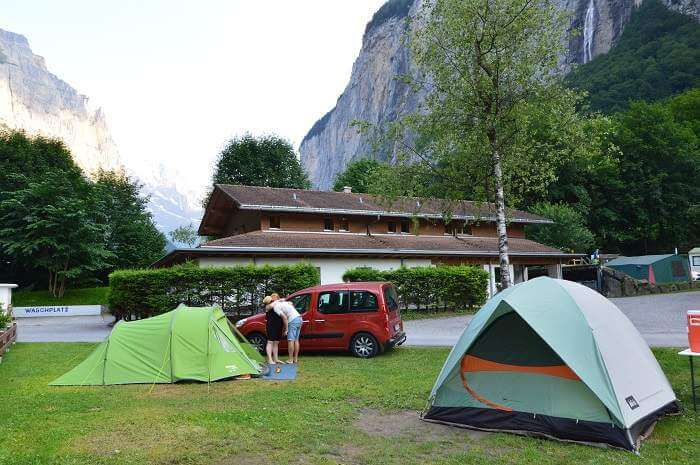
Camping can be great fun, and even more so when you go with children. One thing you learn fairly quickly when you camp with kids is that when it is time for bed, things can suddenly start to feel rather noisy on campgrounds. This is especially true in the summer and if you are still trying to stick to a fairly decent bedtime. This is when a portable sound machine can come in handy. Camping doesn’t always mean you will have access to electricity so a portable machine will be battery operated and will be handy for the times you need that extra bit of noise to drown out your fellow campers as they stay up later or walk part your campground. Even without children, a portable white sound machine can be very handy to cover up any additional noise. Particularly if you are a light sleeper. White noise can blend in fairly well and be a great addition to any campground.
Cooking and Eating
15. Cadac Gas Bottle
Suggested by Sabine DeGaspari from The Travelling Chilli
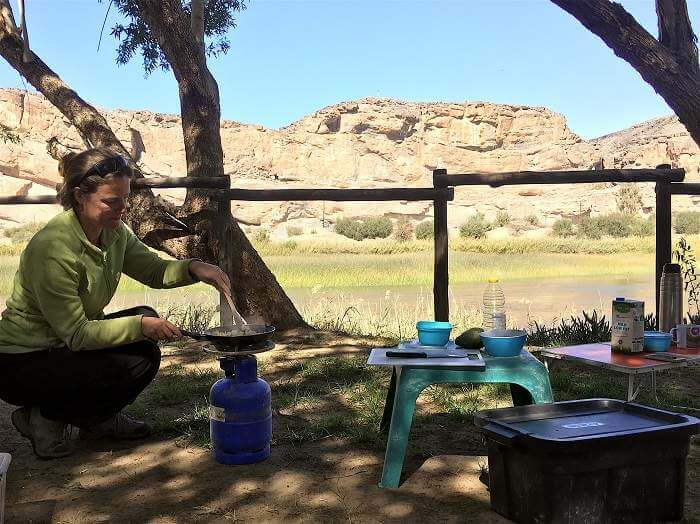
Made in South Africa, the Cadac brand 3kg propane gas bottle with a single cooker ring is our ideal piece of camping kit for use on the open African road and in our favourite remote campsites in Namibia.
This setup sits in a custom bracket attached to the back of our Landrover Defender which is very convenient in that we can easily remove the gas bottle to make a quick espresso on the side of the road without having to unpack half the vehicle to retrieve and set up a full-size camp stove with pipe and regulator.
Due to the fact this is a high-pressure cooker ring, the flame is less prone to being blown out by the wind. Also, considering all Namibian campsites have ‘braai’ (or barbeque) areas and we mostly prefer to cook on an open fire, this gas cooker is a perfect space saver.
These Cadac gas bottles are bought and owned by you and are never exchanged. They are also very easily refilled for about US$10 at almost any fuel service station or hardware store across Africa.
16. Firepit
Suggested by Kat Anne from Wandering Bird
We spend most of our time touring Europe in a motorhome and one of the most useful bits of kit we carry with us is our folding fire pit.
The fire pit is on legs*, which keeps it off the ground and also has a grill so we can use it for cooking. But the best part is the fact that it folds flat for easy storage when not in use.
We’ve used this fire pit all over the place- we tend to do a lot of wild camping up mountains or by lakes. It’s great for anywhere you don’t want to run the risk of a fire or leaving scorch marks behind- nobody wants that.
A couple of quick tips- dispose of your coal/ wood with care. Hot coals can start fires too. Make sure everything is properly out before you leave.
Top Trip Tip: DON’T try and pick up the fire pit when you’ve just been using it. It needs a few hours to cool down before you put it away.
17. Jet Boil Stove
Suggested by Stephen Lioy from Asia Hikes
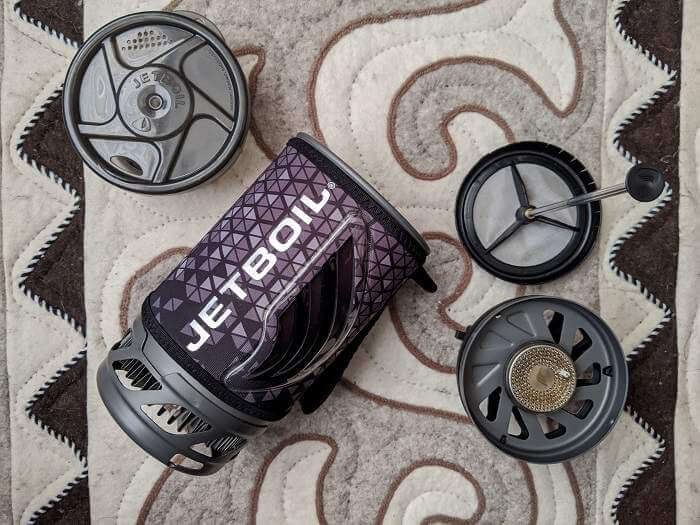
The JetBoil stove system* makes camp cooking much quicker and easier than traditional stoves, particularly on long-distance solo hikes where I’m carrying freeze-dried meals to help save weight. The enclosed heating element and insulated water reservoir mean water boils far quicker than a normal stove and stays warm much longer, and there’s absolutely no clean-up at all so it’s great for avoiding frozen fingers on winter trips.
Plus, with a french-press plunger attachment, it’s also possible to percolate coffee directly in the JetBoil if I decide to travel without my AeroPress.
I’ve used the JetBoil as my go-to stove now on a handful of solo hiking trips around Central Asia, but the first was on a winter trek along the Ala Archa Valley Trail in Kyrgyzstan, when having quick access to warm drinks and soups made a cold outing so much more pleasant – I’ve taken it along on every solo trip since then, and loved it every time I’ve used it.
18. Cookware
Suggested by Erin Parker from Love to Travel – Stay Eat Do
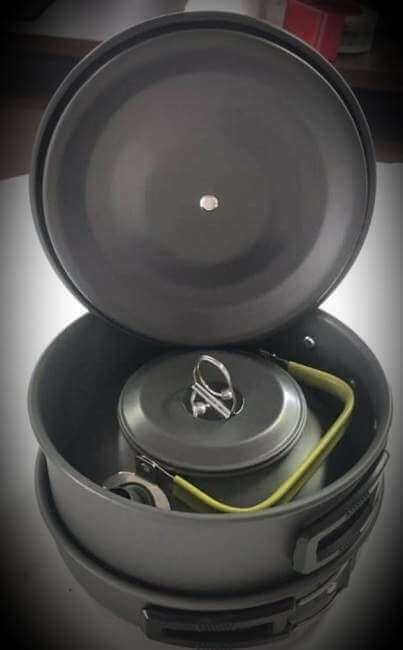
We love to eat good food, no matter where we are, and cooking from a camp stove is no different – that said, we have not been too adventurous yet! We absolutely love our outdoor camping cookware set*. It is basic – lightweight, easy to pack and efficient to use. We use it in combination with their medium size camping stove and it is perfect for us. We are yet to use it for several days in a row out on a long trip, but it is ideal for a few nights away or an easy ‘throw in the car’ last-minute camping trip or bush picnic, which we love to do in the southern Grampians.
We are a family of four and we can cook enough pasta in the saucepan to feed our family (mind you, our kids are still young) and we can easily prepare accompaniments in the pan. We have done sausages, bacon and eggs in the pan successfully; as well as, rice and pasta dishes in combination with the saucepan. My main indicator of good camp cookware is whether it cleans well after cooking and so far, this cookware has passed that test.
19. Aeropress
Suggested by Alex Spenser from Time Zone Junkies
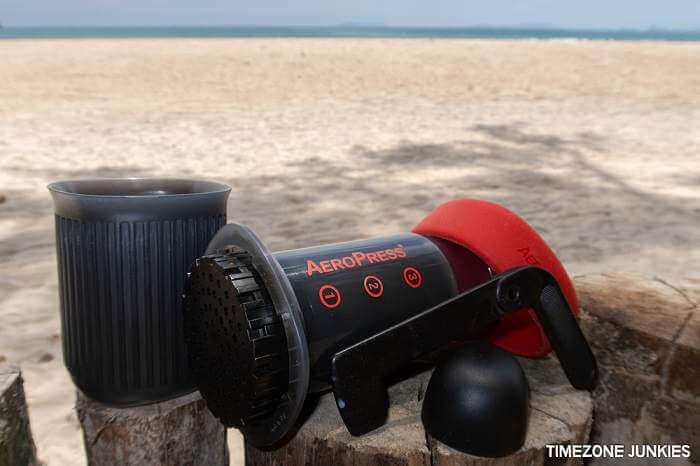
One item that we never go away without, whether it be on a camping trip or a backpacking journey, is our Aeropress. Before we got our first Aeropress coffee machine we would always have to settle for disappointing instant coffee or three-in-one mix that was basically just sugar.
We got our first one back in 2017 and haven’t looked back since! It is simple to use and even easier to clean. All you need is hot water and ground coffee beans. We prefer to use finely ground coffee beans for a deeper more intense flavour. As full-time travellers, we need a little bit of luxury with us and the Aeropress fits that need perfectly. When we hitchhiked through Turkey this little gadget made the perfect companion.
The latest version is called the Aeropress Go* and it is a streamlined version of the old machine and packs up nice and small so it doesn’t take much room in your bag. They generally retail at about $32 US and will last you years!
20. Reusable Coffee Filter
Suggested by Sarah Carter from A Social Nomad
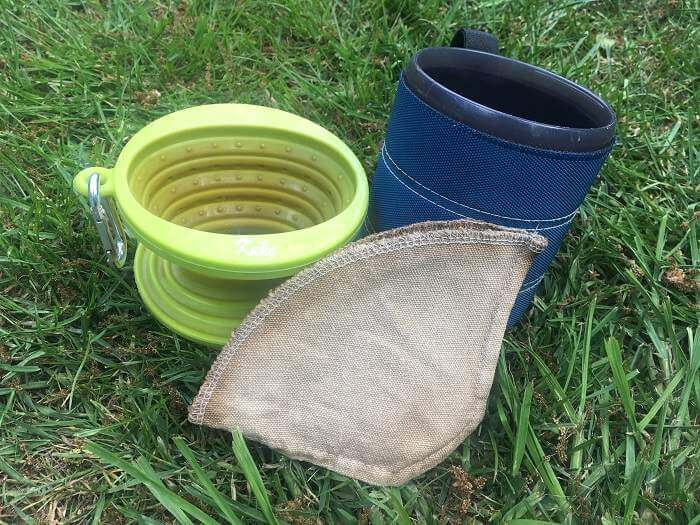
Camp coffee isn’t everyone’s, shall we say, cup of tea and for me, even one night is too long to go without good coffee, so that’s why I always camp with my folding silicon coffee filter dripper*. It folds almost flat, weighs next to nothing and even has a little clip to make sure it’s always attached to something. There’s nothing like a really good cup of coffee when you’re camping and this little gadget means that I get drop coffee wherever I’ve pitched the tent. It was perfect when we camped on the outskirts of the stunning natural landscape of Pamukkale, Turkey.
Once you’ve popped it out, it sits over any camping mug or cup. You line it with a paper coffee filter – or I prefer a reusable cotton filter, measure in your coffee and at hot water. Perfect!
21. Camping Toaster
Suggested by Lee-Ann McKenzie from Be Free with Lee
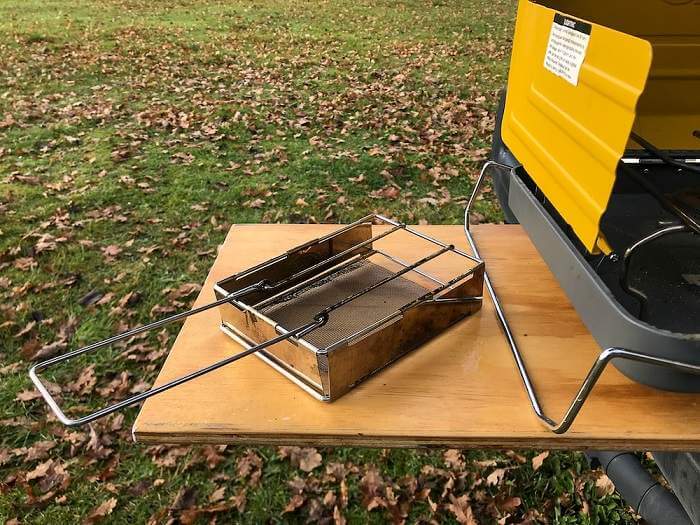
A collapsible camping toaster* is a staple item I make sure I always take with me. It is light, compact and fits over any gas cooker. It only does one piece of toast at a time, but with gas, it doesn’t take long to cook (within 2 minutes!). The mesh part sits on the flame and the piece of toast sits on the section without the mesh. You will be able to tell which way to place the cooker by the handle. I recommend a collapsible camping toaster over a stand-up one any time for its efficient storage capacity and ability to do the job!
One of the best places on my travels I found the camping toaster to be most useful was in the Catlins in New Zealand. It is a rather remote destination and there are no grocery stores. On the last day when we were nearly out of supplies (but still had bread), the camping toaster came in handy and was used frequently. A sturdy camping sidekick you can’t go without!
22. Lifestraw Bottle
Suggested by Campbell Louw from Stingy Nomads
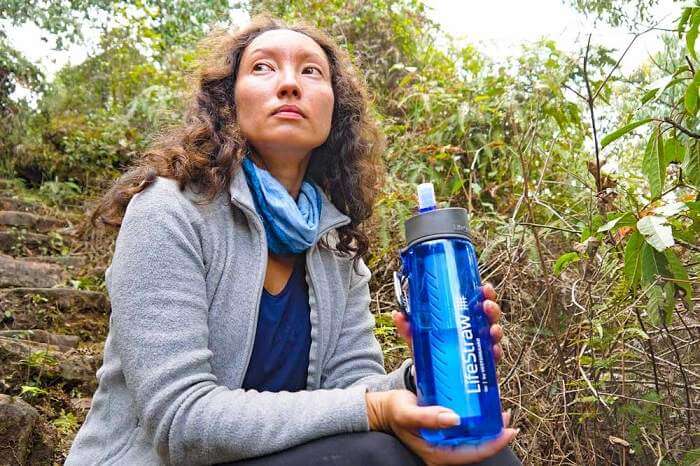
When we go camping, especially on multi-day hikes, our Lifestraw Bottle* is one of the first things we pack. When camping for a couple of days there are often sufficient water sources available, but unfortunately, the water is not always of good enough quality for drinking without purification. There are several options for sterilizing water while camping or hiking; chlorine tablets, iodine tablets and filtration devices are often used. We have used all of them while doing plenty of multi-day hikes all over the world. Ever since using my Lifestraw bottle on a hiking and camping trip in Garibaldi Lake National Park, where water is not potable, I don’t go camping without it.
The bottle filters up to 1,000 gallons (4,000 litres) of contaminated water without iodine, chlorine, or other chemicals; does not require batteries, you just fill the bottle and drink water through the attached straw. It removes 99.9999% of waterborne bacteria, 99.9% of waterborne protozoan parasites, and filters to 0.2 microns; surpasses EPA filter standards. Unlike chemical treatment, this water bottle does not affect the taste of the water. If you need to purify water on your camping or hiking trip don’t go without a Lifestraw.
23. Collapsible Crockery and Spork
Suggested by Christa Rolls from Expedition Wildlife
When cooking meals at a campsite, you should plan to bring along camp crockery and an eating utensil. My recommendation is to have collapsible bowls and cups*, and a spork*.
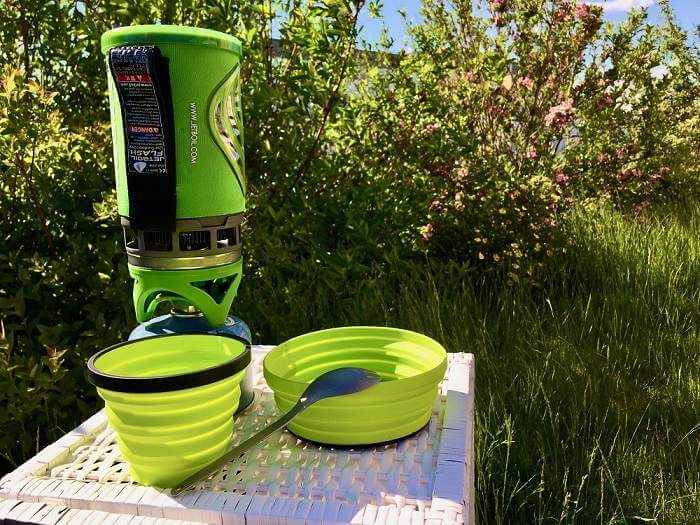
Collapsible crockery is space-efficient and lightweight without the added cost factor. Plus, many collapsible items are made of silicone, which is easy to clean, has anti-microbial properties, and can handle hot foods and liquids. Multipurpose products like these are essential when trying to reduce pack weight.
Sporks are also ideal because the two-in-one feature of a spoon with a fork leaves one less thing to worry about packing or cleaning. Ideally, select a titanium spork, as they are lightweight and will last forever. These items have travelled with me on many camping trips, including on challenging hikes such as the GR20 in Corsica, where keeping pack weight and bulkiness to a minimum is key. If you’re planning a camping trip, definitely consider adding these pieces of gear to your list!
24. Outdoor Whiskey Glasses
Suggested by Graham Grieve from My Voyages Scotland

Well maybe not an absolute essential, but I never leave on a camping trip without my trusted outdoor whiskey glasses. Using an outdoor whisky glass is much more stylish and dignified than drinking straight from the bottle.
Nothing quite beats sitting at the fire and sipping a single-malt Scotch whisky. There’s something about a campfire that really brings out the true flavour of the whisky. Perhaps it’s the smoked barrels that whisky is commonly distilled in.
My outdoor whiskey glasses of choice are the Tru Blu Steel glasses*. These are durable and lightweight – perfect if you’ve got a rough or long walk to your camping spot. I’ve had these for almost a decade and they’ve been through some serious hiking and cycling to remote wild camping spots.
I first bought these whilst visiting the famous Speyside Whisky region in 2011. My ‘durable’ plastic cups had broken after a hike the day before and I was about a five-hour drive away from home.
Finalise your camp setup with the…
Bags
25. Portable Backpack
Suggested by Jessica Schmitt from Up Rooted Traveler
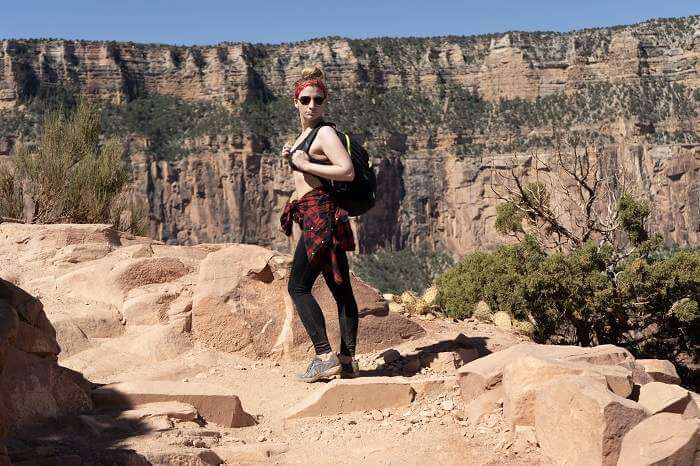
No matter where I go, whether I’m taking a plane to an island getaway or camping in the backcountry, I never go anywhere without my packable backpack, a 10L backpack* perfect for day hikes or other lighter excursions that, within seconds, converts to a compact six-inch pouch. It takes up hardly any space in a larger backpack with an internal or external frame, which can be bulky, cumbersome, and frankly, unnecessary on a quick day hike around my campsite. Whenever I’m ready to go for a quick excursion, rather than going through the hassle of emptying out my internal frame backpack, I’ll pop out my packable one, which is perfect to hold my water bottle, some trusty Clif bars, my camera, and a couple of extra layers in case of rain or other inclement weather. At this point, my packable backpack has been to more U.S. National Parks than most Americans!
Where I’ve been with my packable backpack: I’ve been to 17 countries and 15 U.S. National Parks, including the Grand Canyon and Rocky Mountain National Park
26. Vaude Trekking Backpack
Suggested by Kathi Kamleitner from Watch Me See
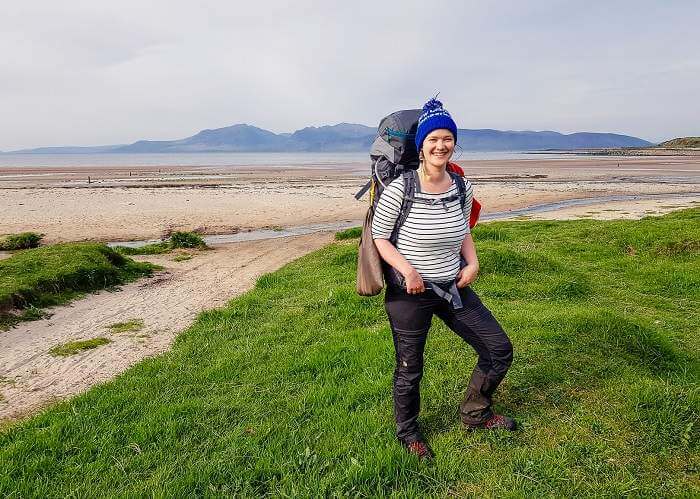
As an avid long-distance hiker and wild camper, I know the value of a spacious backpack with an ergonomic design and practical features. After trying a few different systems, I found my favourite trekking backpack in the 65+10L Vaude Skarvan*.
I got the backpack before my first-ever long-distance hike in Scotland and even my 2-week trek on the Hebridean Way in the Outer Hebrides was a breeze with this backpack.
It has room for everything I need for multiple days on the trail. It fits everything inside, which makes it more ergonomically friendly to carry and is easy to pack. The fully adjustable suspension system means that you can fit the backpack to your body and optimise where you carry the heavy load.
I particularly love all the practical features on the backpack. From the quick access pockets, separate access to the bottom compartment, the roll-top system and a flexible pocket for my water bottle that is easily accessible without taking the pack off.
It’s certainly a bit of an investment, but it’s worth every cent!
Other Helpful Camping Accessories
27. Travel Towel
Suggested by Delilah Hart from Our Travel Mix
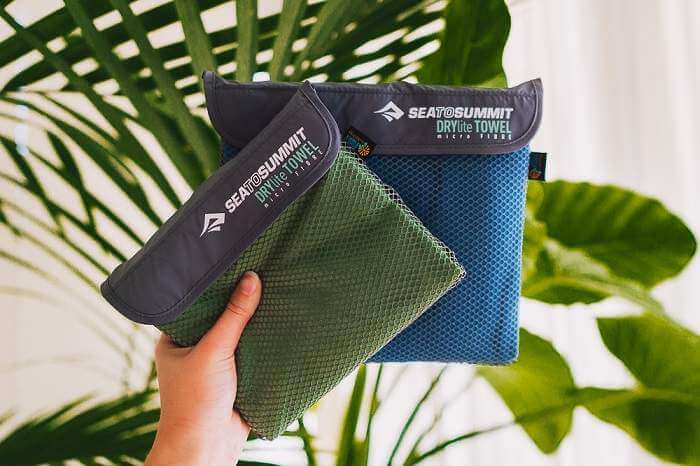
The more you travel, the more you appreciate all the benefits of packing light. When you have limited space and you’re trying to keep the weight down, the thought of packing a bulky towel in your bag sounds daunting.
The good news is, not all towels are huge. Travel towels now exist, including microfibre ones such as the Sea to Summit DryLite travel towels* which we use. They fold down to the size of your hand and the large weighs just 145g.
Of course, they aren’t as comfortable to use as traditional towels, but they are incredibly efficient at absorbing and wiping away any moisture. That’s the trade-off, but most hostels and hotels provide towels – bringing your own is more of a backup or for taking on days out.
For us, our microfibre travel towel has accompanied us all over Oceania and Asia. From using it as a blanket to watch the sunrise at Angkor Wat in Siem Reap, to packing it in our bag for the beaches in Canggu or the waterfalls in Laos.
28. Head Lamp
Suggested by Joanna Davis from The World in My Pocket
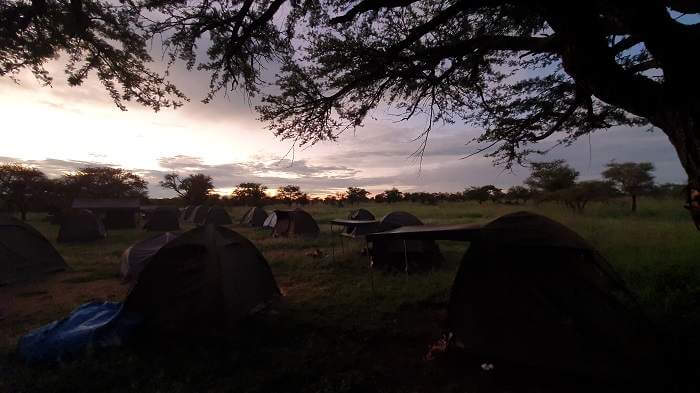
A headlamp is a very useful tool to have when you go camping, especially when you are settling in for the night in a remote place. Once the sun sets, a head torch helps you navigate around but also scares away any wild animals that might be around your camp. For example, during a budget safari in Serengeti National Park in which I was camping, the guide said that the only way to get out of the tent at night to go to the toilet was by using a headlamp. Wild animals are scared by powerful lights and run away. And to be honest, the last thing you want to see in the middle of the night when you go to the toilet is a lion.
Another great example where a head torch was very useful was during my 5 days hike to Machu Picchu, on Salkantay Trek. As soon as the sunset it became pitch dark that high in the mountain. Having a head torch made it easy to navigate through the camp, find the bathroom and also the kitchen, which was a bit of a walk from the tents.
In my opinion, nobody should leave on a camping trip without a head torch*.
29. Mini First Aid Kit
Suggested by Charlotte Blackburn from Bursting My Bubbles
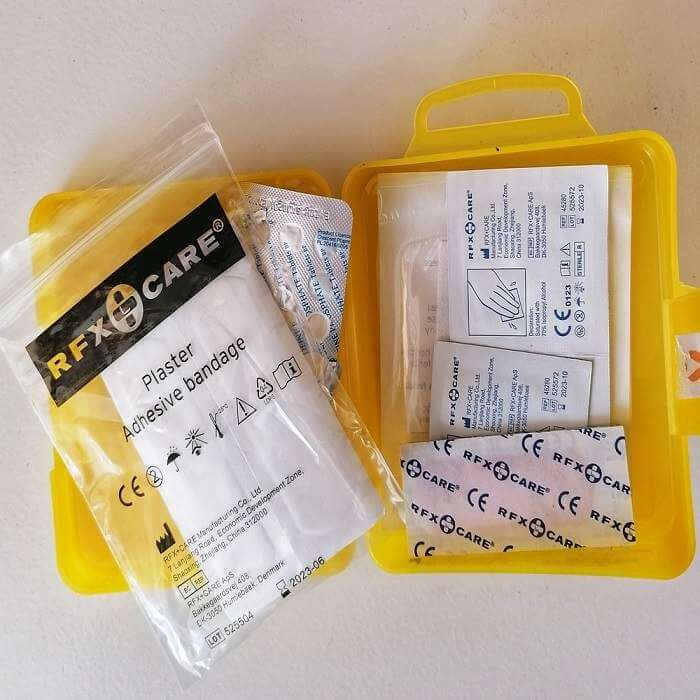
I try to pack as little as possible when I go camping, as the more I pack the more I’ve got to carry. But something I will not travel without is my mini first aid kit. Being accident-prone it’s something I have used on numerous occasions. In my mini first aid kit is:
- Antiseptic wipes
- Different sized plasters
- Bandages
- Tape
- Painkillers
- Scissors
- Soothing Cream
I have used everything in there, from camping in Oman and cutting my arm, to Scotland when I sprained my ankle or America when I burnt my hand. It is just big enough for the essentials and small enough to keep in my rucksack. I originally bought it from a cheap shop in the UK and then have added to it each time. It can help keep potential infections down and allow you to carry on with your trip without the need to go to shops or a pharmacy!
Alternatively, you can create your own…
30. Multifunction Knife
Suggested by Mark Anderson from Vogatech
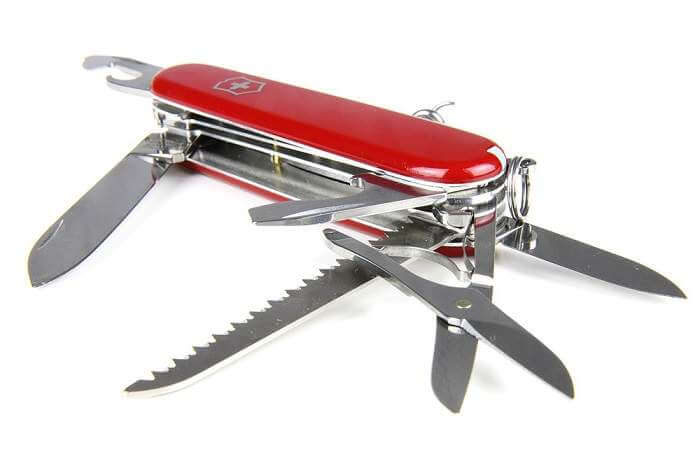
When you could choose one thing to take with you to a lonely island among the first choices would be the Swiss Multifunction Knife! The perfect piece of equipment.
The Swiss Multifunction Knife* is the ideal size so you can carry it in your pocket in a smaller bag. Whether you are camping, fishing, hiking or travelling, this gadget will come in handy. All accessories are made of stainless steel, while the cover is made of quality plastic. In addition to the knife, it has accessories such as scissors, a screwdriver, a can opener, a saw, a bottle opener, and pliers… Following modern technology, the manufacturer even included a laser pointer, Bluetooth, and a USB port in some of the models.
When you look at all the accessories on the Swiss Multifunction Knife you can surely see that you once needed at least one of them. So always have this gadget with you and let it become a real little pocket friend!
31. Kindle
Suggested by Megan Fire-Lily Johnson from Red Around the World

I love my Kindle* and I will tell everyone I know that they need one. That’s how much I love it. It goes almost everywhere with me, camping trips included. As an avid bookworm, I always face the dilemma of which (and how many) books to bring with me on trips, but a Kindle helps cut that back. While I usually bring one physical book for during the day, my Kindle is a lifesaver packed with 600+ books.
It’s particularly great for camping because it’s lightweight (great for backpacking), can easily be read in the tent at night or the hammock during the day, and as long as it’s charged, will last for weeks. As I said, I take it almost everywhere, but it was very helpful on a multi-day camping trip in Big Cypress National Preserve in South Florida last year since we wouldn’t have access to much power and I didn’t want to fill the car with books, which I easily could, just in case. I have a hard time sleeping when I camp, so it’s perfect for keeping me occupied in the dark, which it was a lot since we went in the winter.
32. Portable Solar Charge Power Bank
Suggest by Emma Kelly from Our Way Faring Life
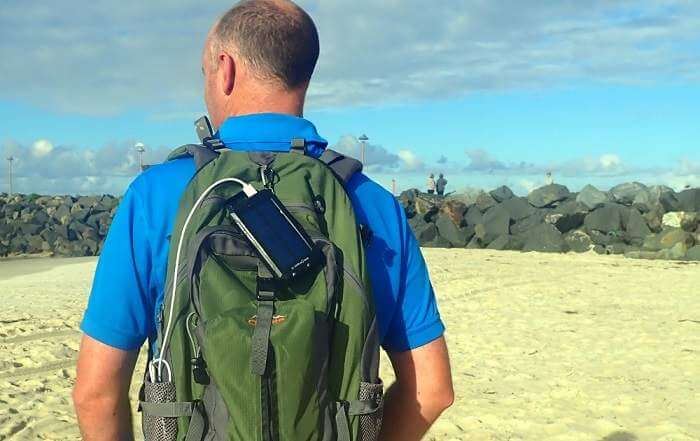
Travelling and living off the grid in our caravan means we are self-sufficient in our power and usually have it easily at hand. Sometimes on our travels, we leave behind our caravan to go camping in our tent.
Our Portable Solar Charger Power Bank* has been a useful addition to our camping gear because we can use it to recharge our smartphone and small portable camping light without having to rely on any other power source.
There are many Portable Solar Chargers on the market. Ours is very compact about the size of a smartphone, is water-resistant and has a torch. It can charge up to two devices with its dual USB ports. If fully charged our Portable Solar Charger can recharge our phone or light 3-4 times which is enough for the amount of time we usually go camping.
The added benefit of a Portable Solar Charger is it kept charged or recharged by using the sun. This requires it being in direct sunlight as much as possible which is achievable in good weather and a struggle in poor weather. Costing less than $30 online delivered it has been a useful addition to our camping gear.
33. SD Card Reader
Suggested by Cass Bail from Cassie the Hag
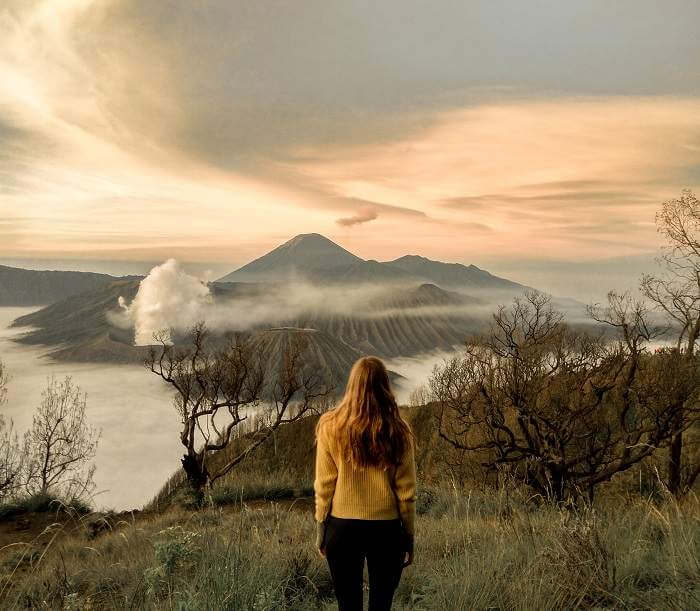
A small and simple, but incredibly useful item, is an SD card reader which directly plugs into your phone. This item is ideal for anyone who takes and edits photographs on the go as you can upload files directly from your SD card into a phone folder or onto Adobe Lightroom (or alternative editing software). This is great for environments where you have limited plug sockets or would rather not take lots of heavy gear – making it perfect for camping or hiking!
When I travel carry-on only with minimal gear, such as when I spent two weeks backpacking through Java – this nifty little item has been a godsend. It also doubles as a way for you to quickly back up photos, especially if you’re able to access the Cloud/online storage as you upload them to your phone. Great for anyone whose camera doesn’t support WiFi or who might be travelling to areas where you have limited WiFi too.
34. Zip Ties
Suggested by Ashley Winder from Impact Winder
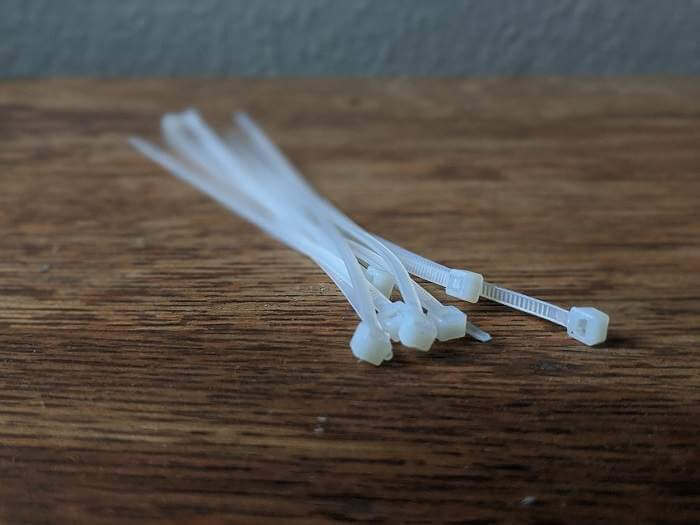
This item is most likely the cheapest on the list, and also the most mundane, but that doesn’t mean that it’s not the most important! When I go travelling or camping, I never leave without packing zip ties*.
I know that’s a bit of an odd selection when travelling, but they have got me out of three very hairy situations in the past. Plus, they’re so light, I always carry a few in my bag, just in case. But why do we need them? Well, when anything breaks it’s my go-to option when trying to fix the problem.
Once when I was cycling across Europe in the middle of nowhere, my tent pole split and there was no way it was going to hold for long. To this day I still have the same zip tie on there holding it all together. 🙂 Another time, my wife and I were road-tripping across the states, and I saw something dangling from the bottom of the car. Zip ties to the rescue. No more hanging pipes, and no more possible breakdown.
Top Trip Tip: If your Zip tie is too small, link multiple together to make a mega zip tie. Just throw a few in your bag, I promise, one day they’ll come in handy.
35. Merino Wool Layers
Suggested by Jennifer Parks from Backyard Family Travel
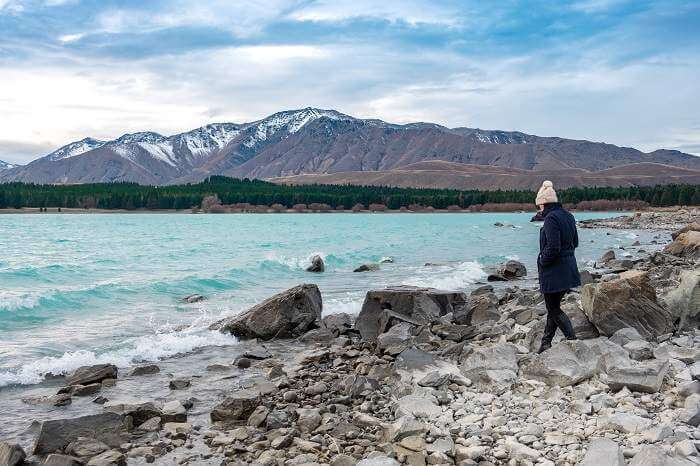
If you are going to be camping somewhere that has cool evenings like New Zealand, then merino wool layers are essential. Many will know that wool keeps you warm, but merino wool layers are very light and very soft (not itchy like some wools), which makes them excellent for travelling and camping. You don’t want bulky layers filling up your bags.
If you are going to be camping off the grid, they are also great because they are moisture-wicking. Merino wool is also bacteria and odour-resistant meaning that it won’t smell, even after days of use. This is great if you are going to be camping for long periods of time or you don’t have access to a washing machine.
We use merino wool long-sleeve layers as a base layer* for extra insulation on cool evenings and to keep us warm on alpine hikes.
If you are after more tips on getting started with camping check out these…
Discover More Travel Accessories
- Which is the best travel luggage for you
- Learn which are the safest travel wallets
- Get essential travel items
- Choose the most useful waterproof toiletry bag
- Find useful travel gear
- Handy items for backpackers
- Useful camping gear
- Essential car accessories for kids
- The best portable travel safes
⇓ PIN THIS ⇓
Just use the share buttons to the left of the screen
DISCLOSURE:
- Pinterest Image Credits:
- Image by David Porter from Pixabay
- Image by chulmin park from Pixabay
- Photo by Richard Cordones on Unsplash
- As an Amazon Associate, I earn from qualifying purchases
- For more information please visit my Disclaimer Page and Privacy Policy.






